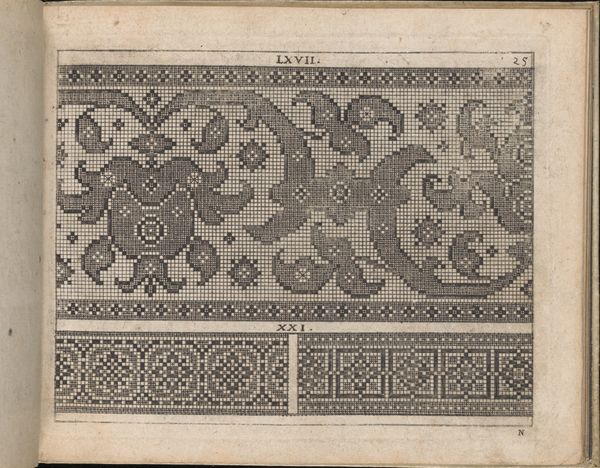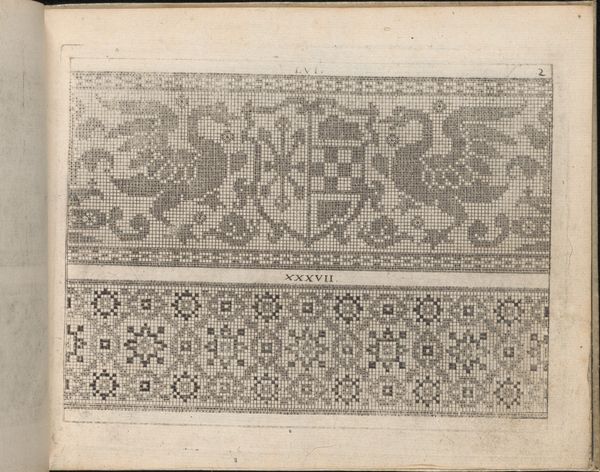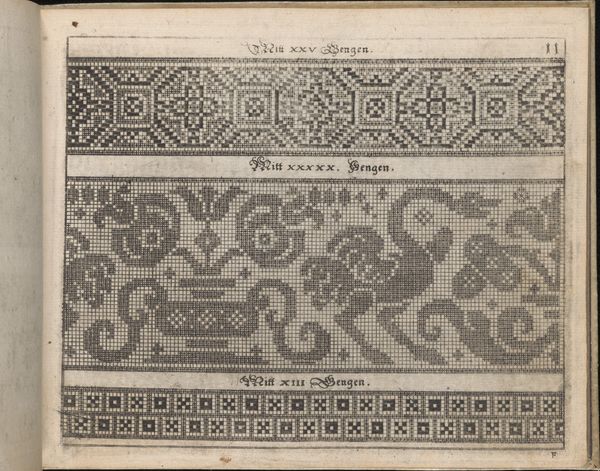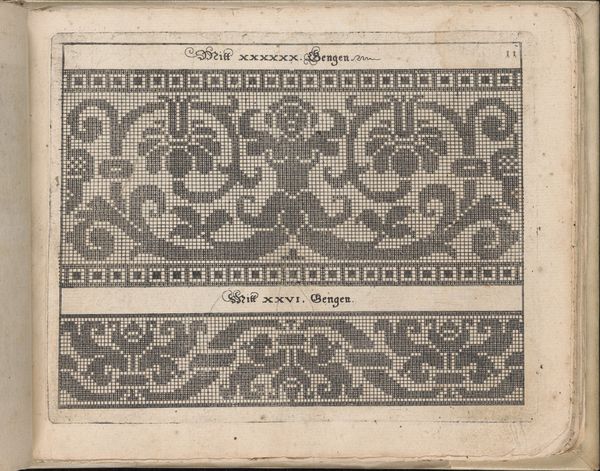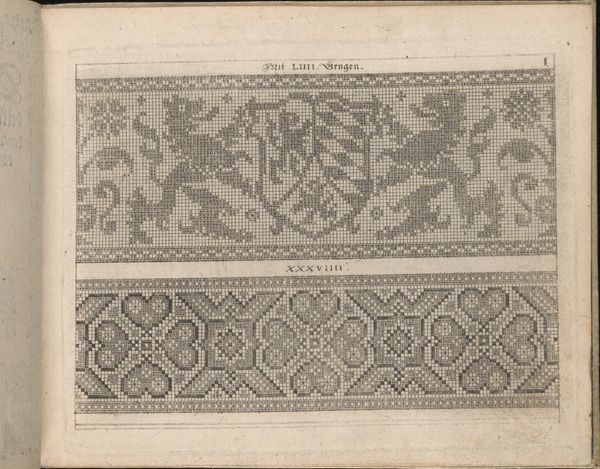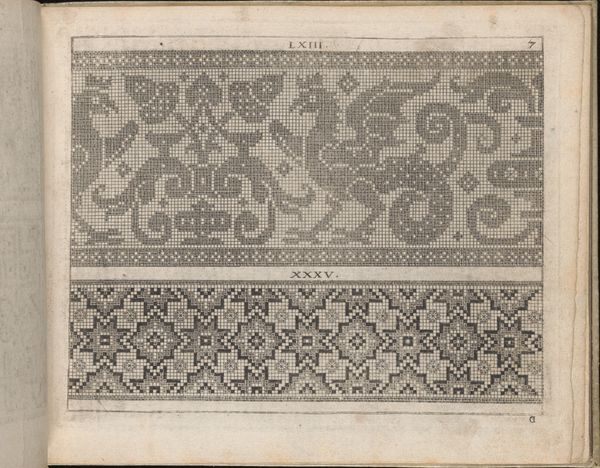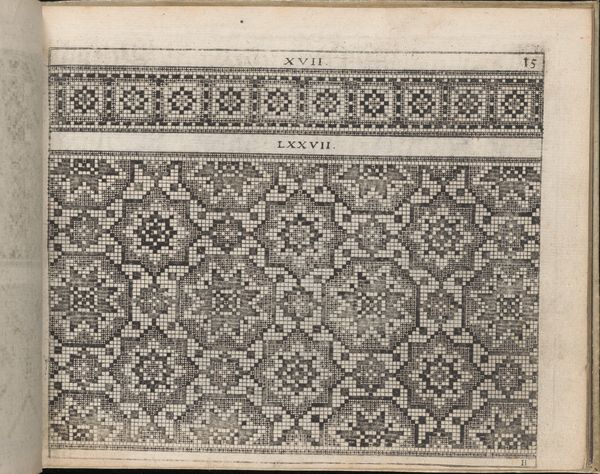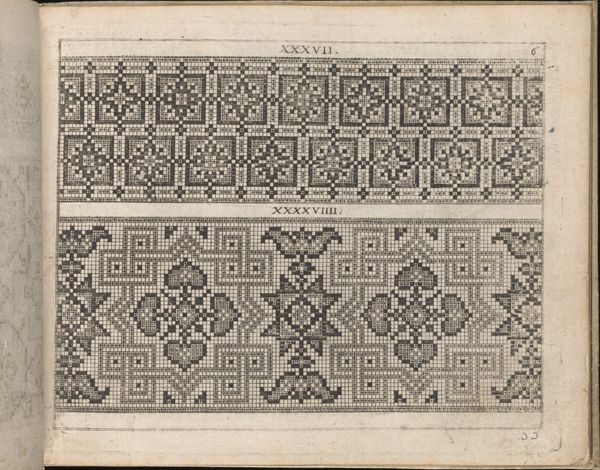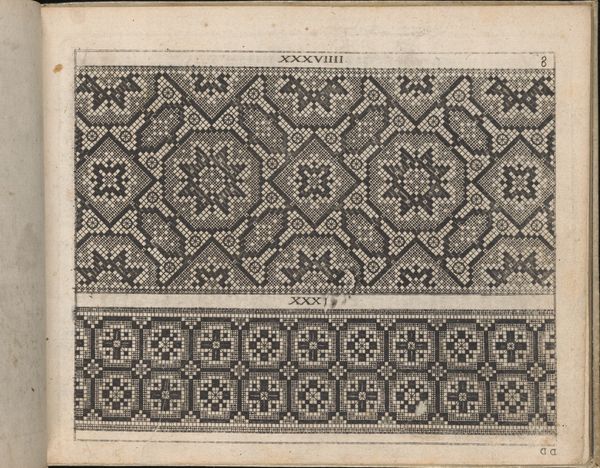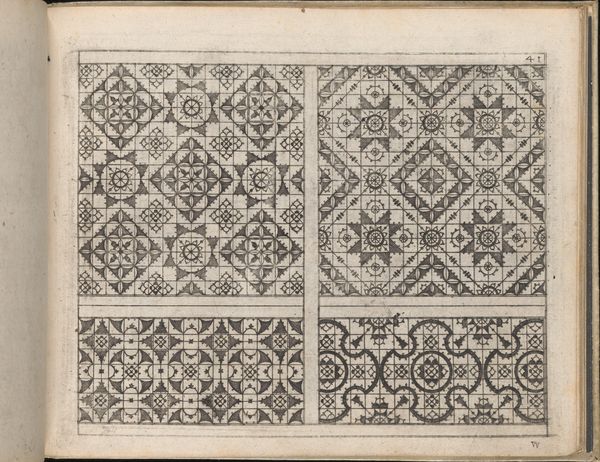
drawing, graphic-art, ornament, print, woodcut, engraving
#
drawing
#
graphic-art
#
ornament
#
ink paper printed
# print
#
book
#
geometric
#
woodcut
#
line
#
northern-renaissance
#
decorative-art
#
engraving
Dimensions: Overall: 5 11/16 x 7 1/16 x 3/4 in. (14.5 x 18 x 1.9 cm)
Copyright: Public Domain
Editor: This is page 28r from "Newes Modelbuch in Kupffer," created in 1604 by Johann Sibmacher. It's a print featuring intricate, almost pixelated designs. There's something both antiquated and strangely contemporary about its geometric patterns and heraldic imagery. What strikes you about this work? Curator: What I find compelling is how this "model book," seemingly a simple collection of patterns, reveals a complex interplay of gender, class, and cultural identity in the early 17th century. These weren't just decorations; they were blueprints for embroidery, a skill deeply tied to feminine virtue and domestic productivity, yet also a potential site for creative expression within those confines. Notice how the geometric designs offer structure and order, yet within that structure, the heraldic symbols and floral motifs hint at personal or familial narratives. What stories were being stitched into these textiles, and by whom? Editor: That’s fascinating! I hadn't considered the act of embroidery itself as a form of storytelling or even resistance. Curator: Exactly! And who had access to these patterns? These books weren’t cheap, so owning one signaled a certain social standing. The act of creating and displaying these embroidered pieces was a performance of identity, reinforcing or perhaps subverting the norms of the time. These motifs are part of visual vocabulary, part of identity construction for women. Do you notice any symbol that stands out? Editor: The heraldic lion definitely catches my eye, juxtaposed with those more domestic floral elements. It's such a striking contrast. Curator: Precisely. It speaks volumes about the ways in which women navigated their roles within a patriarchal society, literally weaving their personal identities into the fabric of their world. The Modelbuch offered tools, didn't constrain talent. Editor: I never thought about patterns carrying so much history. It makes me see these old textiles in a completely different light. Thank you! Curator: Absolutely. Art becomes far richer, once interrogated as part of cultural movements.
Comments
No comments
Be the first to comment and join the conversation on the ultimate creative platform.

